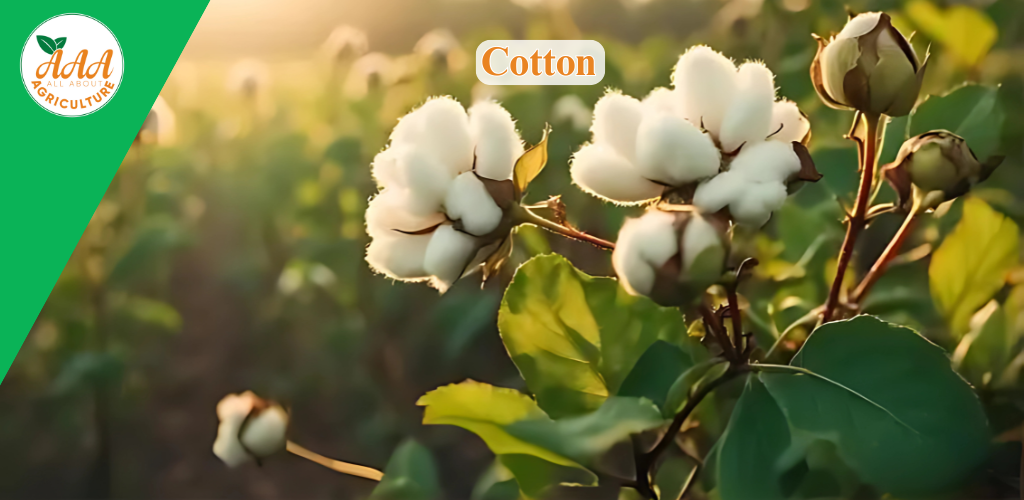Cotton (गोसावळी/कापूस)
Cotton (गोसावळी/कापूस)

Production in India –
- What is Cotton?
Botanical name: Gossypium spp.
A major fiber crop, also used for cottonseed oil and animal feed (cottonseed cake).
Known as कापूस (Kapus) in Marathi and कपास (Kapas) in Hindi.
- India’s Global Rank in Cotton
India is the world’s largest cotton producer, followed by China and the USA.
Also ranks second in cotton export globally.
- Top Cotton Producing States in India
Rank State Contribution (%)
1 Maharashtra ~25%
2 Gujarat ~23%
3 Telangana ~15%
4 Rajasthan ~10%
5 Andhra Pradesh ~8%
Other States: Madhya Pradesh, Karnataka, Punjab, Haryana, Tamil Nadu.
- Climate & Temperature Requirements
Type: Kharif crop
Temperature range:
Ideal: 21°C to 30°C
Cannot tolerate frost or heavy rainfall.
Rainfall: Moderate (600–1200 mm) – sensitive to waterlogging
Sunlight: Needs bright sunny weather during growth and harvesting.
- Soil and Agronomy
Soil type: Black cotton soil (Regur) is best; also grows in loamy soils.
pH: 6.0 – 7.5
Sowing season: June–July (with monsoon)
Seed rate:
Bt cotton: 1.5–2 kg/ha
Desi cotton: 10–12 kg/ha
Spacing: 90 x 60 cm (varies by variety)
Maturity: 150–180 days
Average yield: 400–700 kg lint/ha (can reach 1000+ kg/ha with hybrids)
- Economic Importance
- Backbone of Indian textile industry.
- Provides raw material to over 1500 textile mills.
- Cottonseed oil used for cooking and biofuels.
- Byproducts like cottonseed cake used in cattle feed.
- Provides employment to millions of farmers and workers.
- Attractive Features / Interesting Facts
India has the largest area under cotton cultivation globally (~13 million hectares).
Bt cotton revolutionized productivity since early 2000s.
Sustainable cotton initiatives (like Organic Cotton and Better Cotton) are growing.
Each cotton plant yields about 4-5 bolls, each with hundreds of fibers.
Cotton lint is used in clothes, paper, bandages, and even currency notes!